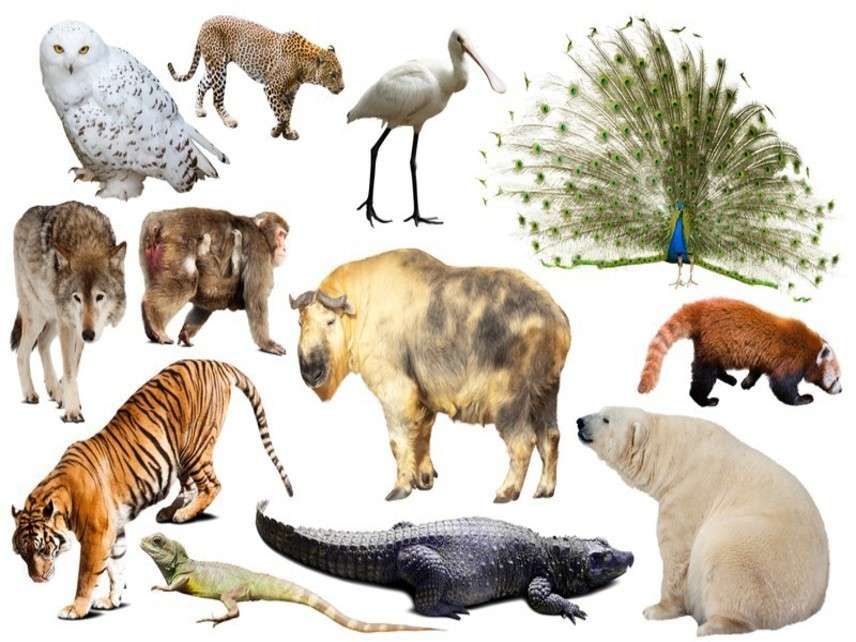Population Doomster Paul Ehrlich's New Forecast: 'Biological Annihilation'
New predictions of animal population doom are likely exaggerated.

Stanford biologist Paul Ehrlich has made a gaudy career of prophesying imminent ecological doom. "In the 1970s hundreds of millions of people will starve to death in spite of any crash programs embarked upon now," he declared in his 1968 manifesto The Population Bomb. In the subsequent 50 years, as world population more than doubled, the proportion of chronically undernourished people in the world dropped from 33 percent in 1968 to 11 percent now.
Ehrlich is now predicting population doom for the world's animals. The cause? Human overpopulation, naturally. Ehrlich and his colleagues Gerardo Ceballos and Rodolfo Dirzo describe the allegedly impending "biological annihilation" of about a third of all vertebrate land species in a paper for The Proceedings of the National Academy of Sciences.
"The ultimate drivers of those immediate causes of biotic destruction [are] human overpopulation and continued population growth, and overconsumption, especially by the rich," they argue. "All signs point to ever more powerful assaults on biodiversity in the next two decades, painting a dismal picture of the future of life, including human life." The crisis supposedly results from "the fiction that perpetual growth can occur on a finite planet"; meanwhile, "the window for effective action is very short, probably two or three decades at most."
Ehrlich and his colleagues reached those conclusions by taking the International Union for the Conservation of Nature's data on populations of 27,600 species of mammals, birds, reptiles, and amphibians and overlaying those figures on a grid of 22,000 plots measuring 10,000 square kilometers across all of the continents. The goal is to identify areas where local populations of each species has been extirpated. They report that since 1900 "nearly half of known vertebrate species, 32% (8,851/27,600) are decreasing; that is, they have decreased in population size and range."
This not the first time the alarms of mass extinction has been raised. In 1970, Dr. S. Dillon Ripley, secretary of the Smithsonian Institution, predicted that between 75 and 80 percent of all species of animals would be extinct by 1995. In 1979, the Oxford biologist Norman Myers suggested that the world could "lose one-quarter of all species by the year 2000." Also in 1979, the Heinz Center biologist Thomas Lovejoy chimed in, estimating that between a seventh and a fifth of global diversity would become extinct by 2000. None of those dire predictions came true.
Ehrlich and his dour colleagues are probably wrong too, thanks to human ingenuity and the very trends in "perpetual growth" that they think are threats to biodiversity.
First, human population will peak this century at perhaps as few as 8.2 billion people. The United Nations projects that 80 percent of those will be living in cities by 2100, meaning that fewer than 1.6 billion people will be living on the landscape, down from 3.2 billion now. Humanity may already be at peak farmland. If biofuel subsidies are stopped, some researchers project that as much as 400 million hectares of land would be returned to nature by 2060; that is an area double the size of the United States east of the Mississippi River.
Many countries have now gone through the forest transition and their forests are expanding. More broadly, the global rate of deforestation has been declining. Furthermore, there is evidence that "dematerialization": Thanks to technological progress, humanity is using relatively less stuff to obtain more services. Current trends suggest that humanity is likely to withdraw increasingly from nature over the course of this century, thus relinquishing a great deal of territory in which our fellow creatures will be able to thrive.
In fact, a very different and much more positive story can be told about how biodiversity is faring around the world. In a forthcoming book, Inheritors of the Earth: How Nature Is Thriving in an Age of Extinction, University of York conservation biologist Chris Thomas points out that at reasonable scales—say, regions the size of Vermont—humanity has actually been enriching local biodiversity. How? By moving around and introducing species to areas they were previously absent. New Zealand's 2,000 native plant species have been joined by 2,000 from elsewhere, doubling the plant biodiversity of its islands. Meanwhile, only three species of native plants have gone extinct.
In many cases, as I reported in my book The End of Doom, the newcomers may actually benefit the natives. In a 2010 review article in the Annual Review of Ecology, Evolution, and Systematics, the Rutgers ecologist Joan Ehrenfeld reports that rapidly accumulating evidence from many introduced species of plants and animals shows that they improve ecosystem functioning by increasing local biomass and speeding up the recycling of nutrients and energy. Similarly, as a 2012 review article in Trends in Ecology and Evolution notes, "ecological theory does not automatically imply that a global decline in species richness will result in impaired functioning of the world's ecosystems." In other words, the foundations of civilization are likely not imperiled even in the dubious event that Ehrlich's mass extinction occurs.
I mourn the loss of species. Each species embodies complex genetic libraries, behavioral repertoires, and evolutionary histories that are both scientifically fascinating and aesthetically fulfilling. As a relatively well-off First Worlder, I have had the intense pleasure of walking in the wild within 40 feet of grazing rhinos and of swimming with Galápagos penguins. It would be a shame if future generations do not have an opportunity to enjoy such experiences.
Fortunately, Ehrlich's new extinction predictions are likely to be as accurate as his famine forecasts.


Show Comments (49)